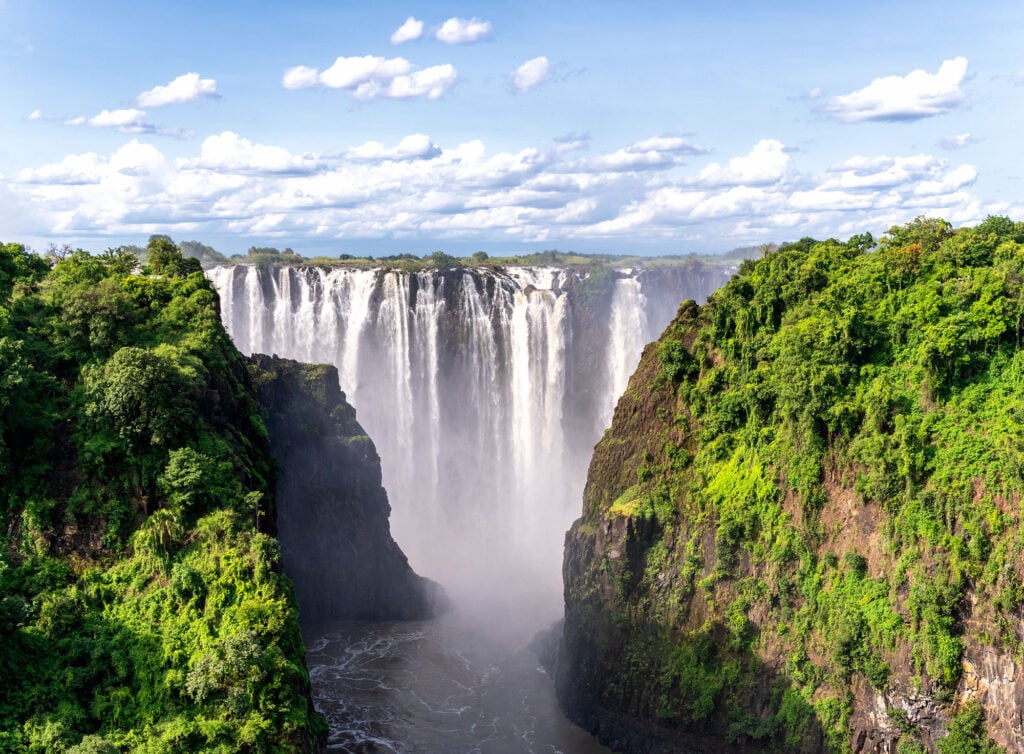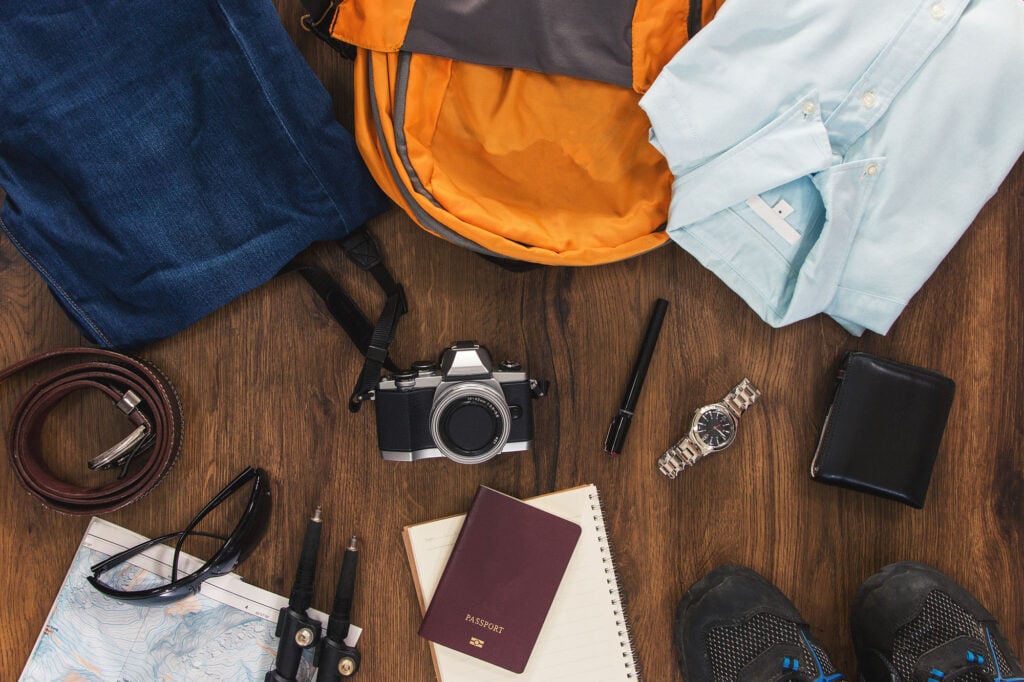Zambia is one of the most overlooked photography destinations in Southern Africa. While other countries attract more attention, Zambia offers dramatic waterfalls, remote wildlife areas, and daily river life—without large crowds or obstructed viewpoints.
Travellers often miss key moments due to limited access, seasonal changes, or lack of local insight. Some parks become harder to reach in the wet season, and lighting conditions shift quickly throughout the day. Without the right timing or setup, strong shots are easy to miss.
This guide shows where and when to capture Zambia’s best wildlife, landscapes, and cultural scenes. It includes location advice, seasonal conditions, and preparation tips to help you get the most out of a photography-focused trip.
Photographing Victoria Falls
Victoria Falls, also known as Mosi-oa-Tunya, is one of the most striking photography sites in Southern Africa. Early morning and late afternoon provide the best light. The high-water season (Feb–May) creates thick mist and rainbows. Low water months (Aug–Oct) reveal more cliff detail and allow closer angles.
Ground-level viewpoints work well with wide lenses. A polarising filter cuts glare from the spray. Helicopter tours offer bird’s-eye shots with less interference. For framing and scale, include features like the Royal Livingstone Hotel along the Zambezi.

Best Times of Year for Photography in Zambia
Zambia’s seasons affect lighting, wildlife visibility, and travel access. For photography, both wet and dry months offer different advantages depending on your focus.
- Dry season from May to October works well for wildlife and walking safaris
- Clear skies and dry tracks allow easier movement and more visibility
- Best for South Luangwa, Kafue, and Victoria Falls cliff exposure
- Green season from November to April suits landscape and bird photography
- Dramatic skies, fresh foliage, and fewer visitors improve creativity
High water at Victoria Falls usually peaks from February to May. This period produces mist, rainbows, and stronger flow shots. Low water from August to October gives better rock detail and easier access to viewpoints.
Wildlife Photography in South Luangwa
South Luangwa National Park is known for close wildlife sightings, ideal for photographers seeking animal behaviour and detail. The park is home to elephants, lions, hippos, giraffes, and a strong leopard population. Lighting conditions shift fast, so early starts and sunset drives are essential.
Walking safaris offer a lower perspective and fewer obstructions. Skilled guides position you based on wind, animal movement, and light. Patience pays off, especially near water crossings or open plains. Unlike many parks, South Luangwa’s viewing conditions remain strong across dry months from June to October.
Sunset and River Life on the Zambezi
The Zambezi River is central to Zambia’s ecosystem and local life. Sunset photography here focuses on light and reflection. The colours shift quickly—from gold to deep red—across calm water.
Key subjects include fishermen in dugout canoes, riverside lodges like Tongabezi or Islands of Siankaba, and wildlife such as elephants crossing the banks. Use a tripod for longer exposures and experiment with silhouettes and reflections. Late afternoon cruises are ideal for handheld landscape work.
How to Prepare for a Photography Trip to Zambia
Photographing in Zambia means working in open plains, dusty tracks, and riverbank humidity. Careful gear prep can improve results and avoid damage during travel.
- Two camera bodies help avoid lens switching in dusty areas
- A telephoto lens and wide-angle lens cover most wildlife and landscape needs
- Weather-sealed gear with dry bags or rain covers reduces exposure risks
- A tripod supports sharp river or low-light shots
- Spare batteries and memory cards ensure full-day coverage without limits
- Lens cloths or air blowers help manage mist and dust
Neutral clothing avoids attracting attention from wildlife. Domestic flights may have strict gear limits, so pack accordingly. Travel insurance should include cover for photography equipment.

Local Culture and Community Portraits
Zambia’s cultural diversity adds another layer for photographers. Rural communities often welcome respectful visitors. Markets, craft workshops, and village tours offer portrait opportunities and daily life moments that contrast with wilderness settings.
Always ask permission before taking photos of people. A friendly approach, basic local greetings, and a short explanation go a long way. Avoid intrusive angles or zoom shots without consent. Candid shots work best when trust is established naturally.
Why Travel with Destinations Africa
At Destinations Africa, we design itineraries that support photography goals across Zambia and the wider region. Whether you want close-up wildlife access, aerial landscapes, or river sunsets, we help plan around season, light, and access.
Our trips include South Luangwa, Kafue, Victoria Falls, and cultural destinations in Zambia, as well as custom safaris in Botswana, Namibia, Kenya, Tanzania, Zimbabwe, Rwanda, and Mozambique. We work with local guides, private camps, and transport that supports your gear and timing.
Get in touch to plan a photography itinerary based on the locations, activities, and timing that suit your trip across Zambia and nearby regions.
